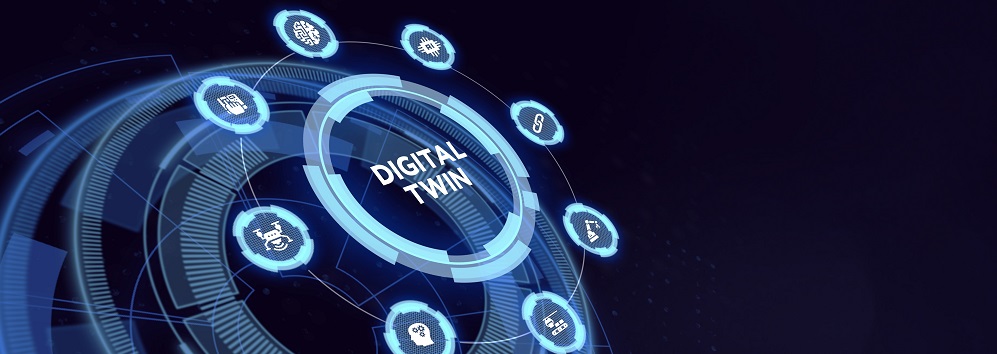
Capability: Data Visualisation and Reporting



Predicting what’s coming next and understanding how best to respond is the kind of challenge organisations struggle with all the time. As the world becomes less predictable and ever-changing technology transforms operations, historical data becomes harder to extrapolate. And even if you can make reasonable assumptions about future changes, how they will impact on the various aspects of your business is even more problematic.
Decision makers need another tool in their arsenal to help them build effective strategies that can guide big changes and investments. They need to combine an understanding of their setup with realistic projections of how external and internal changes could have an impact. A Digital Twin built with predictive models can combine these needs, giving highly relevant and reliable data that can guide your future course.
The Defence Fuels Prototype
Using Mood Software and in collaboration with the MOD’s Defence Fuels Transformation, CACI built a digital twin focused on fuel movement within an air station. With it we aimed to understand the present, but also crucially, to predict the near future and test further reaching changes.
We used two kinds of predictive model that can learn from actual behaviour. For immediate projections, we implemented machine learning models that used a small sample of historical data concerning requirements for refuelling vehicles given a certain demand, allowing an ‘early warning system’ to be created.
However, we knew that the real value came in understanding what’s further ahead, where there is a higher risk of the wrong decision seriously impacting the success of operations. We adapted and integrated an existing Defence Fuels Enterprise simulation model, Fuel Supply Analysis Model (FSAM), to allow the testing of how a unit would operate given changes to the configuration of refuelling vehicles.
Functions were coded in a regular programming language to mimic the structural model and to mimic the kinds of behaviour that is evidenced through the data pipeline. As a result, we are able to make changes to these functions to easily understand what the corresponding changes would be in the real world.
This allows decision makers to test alternative solutions with the simulation models calibrated against existing data. Models informed by practical realities enables testing with greater speed and confidence so you have some likely outcomes before committing to any change.

What does this mean for me?
Digital Twins are extremely flexible pieces of technology that can be built to suit all kinds of organisations. They are currently in use in factories, defence, retail and healthcare. Adaptable to real world assets and online systems, it’s hard to think of any area they couldn’t be applied to.
Pairing a digital representation of your operations, processes and systems with predictive and simulation models allows substantial de-risking of decision making. You can predict what will happen if your resourcing situation changes, and plan accordingly; you can also understand the impact of sweeping structural changes. The resulting data has been proven against real-world decisions, making it truly reliable.
Time magazine has predicted that Digital Twins will ‘shape the future’ of multiple industries going forward and I think it’s hard to argue with that.
If you’re looking for more on what Digital Twin might be able to do for you, read ‘Defence Fuels – Digital Twin’. In this white paper we show how we’re using Digital Twin to make improvements worth millions of pounds.
For more on Mood Software and how it can be your organisation’s digital operating model, visit the product page.


Meaningfully improving your organisation’s operations sometimes requires more than just tinkering: it can require substantial change to bring everything up to scratch. But the risks of getting it wrong, especially for mission critical solutions depended on by multiple parties, frequently turn decision makers off. What if you could trial that change, with reliable predictions and the potential to model different scenarios, before pushing the button?
CACI’s Digital Twin offers just that capability. Based on an idea that’s breaking new ground from businesses like BMW to government agencies like NASA, it gives decision makers a highly accurate view into the future. Working as a real-time digital counterpart of any system, it can be used to simulate potential situations on the current set up, or model the impact of future alterations.
Producing realistic data (that’s been shown to match the effects of actual decisions once they’ve been undertaken), this technology massively reduces risk across an organisation. Scenario planning is accelerated, with enhanced complexity, resulting in better alignment between decision makers.
What are Digital Twins doing right now?
From physical assets like wind turbines and water distribution, Digital Twins are now being broadly used for business operations, and federated to tackle larger problems, like the control of a ‘smart city’. They’re also being used for micro-instances of highly risky situations, allowing surgeons to practice heart surgery, and to build quicker, more effective prototypes of fighter jets.
Recently, Anglo American used this technology to create a twin of its Quellaveco mine; ‘digital mining specialists can perform predictive tests that help reduce safety risks, optimise the use of resources and improve the performance of production equipment’. Interest is increasingly growing in this tech’s potential use within retail, where instability from both supply and demand sides have been causing havoc since the pandemic.
This technology allows such businesses to take control of their resources, systems and physical spaces, while trialling the impact of future situations before they come to pass. In a world where instability is the new norm, Digital Twins supersede reliance on historical data. They also allow better insight and analysis into current processes for quicker improvements, and overall give an unparalleled level of transparency.

Where does Mood come in?
Mood Software is CACI’s proprietary data visualisation tool and has a record of success in enabling stakeholders to better understand their complex organisations. Mood is crucial to CACI’s Digital Twin solution as it integrates systems to create a single working model for management and planning. It enables collaborative planning, modelling and testing, bringing together stakeholders so they can work to the same goals.
Making effective decisions requires optimal access to data – and the future is one area we don’t have that on. But with Digital Twin technology, you are able to draw your own path, and make decisions with an enhanced level of insight.
If you’re looking for more on what Digital Twin might be able to do for you, read ‘Defence Fuels – Digital Twin’. In this white paper we show how we’re using Digital Twin to make improvements worth millions of pounds.

Back in October 2021, CACI took part in the Northumbrian Waters Innovation Festival. One of the events we participated in was the Oceans of Data hack sponsored by Sia Partners – Chris, Ian, Matt and Myself (Paul) all attended remotely representing CACI. The data hack wasn’t scheduled to start until the Tuesday, but a kick-off event was being held on the Monday morning, the highlight of which was an impromptu workout session run by none other than Mr Motivator himself; it was high energy fun and exhausting! If you want to see just how exhausting… watch this.
Taking the rest of the day to recover from that, we got hold of the data sets being provided for the data hack under an NDA and set about our challenge. For the Oceans of Data challenge, we were asked how can we leverage insights from our ocean of operational data to make our services even more reliable and resilient?
“Data introduction: In 2019, NWG invested in Cloud technology to capture and store the vast volumes of data generated by our 30+ SCADA systems – now creating almost 45 million data records per day. While great progress has been made to extract value from this data, we are confident that much more insight can be generated about the performance of our assets, their rate of deterioration and the way they respond to changing operational conditions”.
The data provided was broken down into two broadly distinct sets of data:
- Work Order information out of their Asset Management System (Maximo).
- Sensor data from their extant SCADA networks across several sewage treatment plants. There was also some supplementary information provided, including an asset classification hierarchy that Northumbrian Water have crafted and a series of SCADA Mimics (high level process flows).
The stated objective of the data hack was to provide a path to holistic analysis of the data, particularly, correlating sensor data to work order data providing a history of activity leading up to corrective work orders. This historic information could then be used in predictive modelling of future failure; thereby turning all the reactive maintenance activity (which is relatively time consuming and costly) into scheduled maintenance activity (which is planned, less disruptive and much cheaper).
Day 1
The hack consisted of presentations by Northumbrian Water around the operating of sewage treatment plants, to provide us with a basic understanding of the business, forming the teams for the hack and a first pass at data analysis; working out what could and could not be done in the rest of the time available.
The event had an amazing mix of people attending, ranging from data scientists and machine learning (ML) experts to software engineering expertise. My team consisted of software engineering specialists, which worked well for our chosen idea as our teams abundant Java and React experience proved invaluable. Along with the experts attending, we could also call on our own ML and data scientists within CACI if we needed any advice.
Having dived into the data, Team CACI decided to play to our strengths and develop something, focusing on the data sets in isolation and hopefully providing Northumbrian Water with a new way of interpreting their data.
Day 2
We spent the day preparing the data into machine readable formats and finalising the approach for the application and then actually building it. We chose to provide a heatmap analysis of the two datasets, with Work Orders being visualised across the asset classification hierarchy and Sensor data being visualised across the SCADA Mimics (high level process flow diagrams) that had been made available.
Day 3
Day 3 was focused on refining the application – bug fixing, visual styling, cutting bits we had no time for (such is the way of the hackathon!) – and creating the presentation, which included the demo that we would show the judging panel.
Unfortunately, we ran out of time on the sensor data visualisation, so that hit the cutting room floor. This allowed us to focus on bug fixing the application and making it look more like the asset classification hierarchy we had been shown – making it relatable to Northumbrian Water.
The afternoon of Day 3 was spent presenting the solutions from all the teams and being judged. As the presentations progressed (Team CACI had opted to go last) a common theme arose: correlating the two data sets was very difficult and to do it with any degree of accuracy/success would require more data.
We were the only team who had made a working proof of concept, while others had focused on presentations. Our interactive website that the judges could play with was well received. The fact that we had used Northumbrian Water’s own asset classification hierarchy was positively acknowledged and provoked quite a bit of interest. We were then subjected to some questioning by the judging panel before they retired to select the category winners.
I am delighted to announce that we won the Best Data Visualisation category:

The CACI data hackathon team really impressed the judges with their solution, a prototype data visualisation to help direct our maintenance teams toward our most problematic assets, structured to represent our asset hierarchy in clear format to enable rapid insights. We enjoyed working with the team who remained enthusiastic despite the challenging task we’d set for them! Thank you and well done.
Northumbrian Waters
Takeaways from the Event
There were a few takeaways from the data hack and the event as a whole:
- With preparation, virtual events of this kind can really work, congratulations to Northumbrian Water for putting on such a successful event.
- As ever, time is your enemy, the teams only had about 16 working hours available to us to produce something and everybody made the absolute most out of the time allowed.
- Finally, this was a team effort, but massive thanks to Chris, Ian and Matt who did all the hard work, I just presented it at the end. Not forgetting Ryan who nominated us, and the Critical National Infrastructure team, for selecting the event.
For more information on the event and our proof of concept expertise, or our wider CACI capabilities, contact us at cni@caci.co.uk.